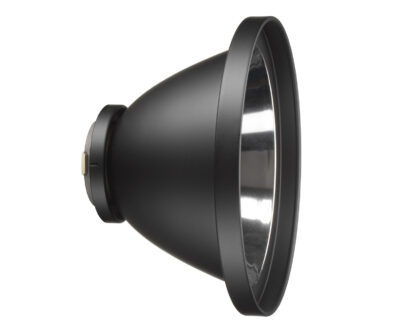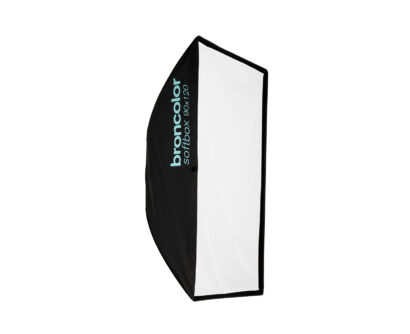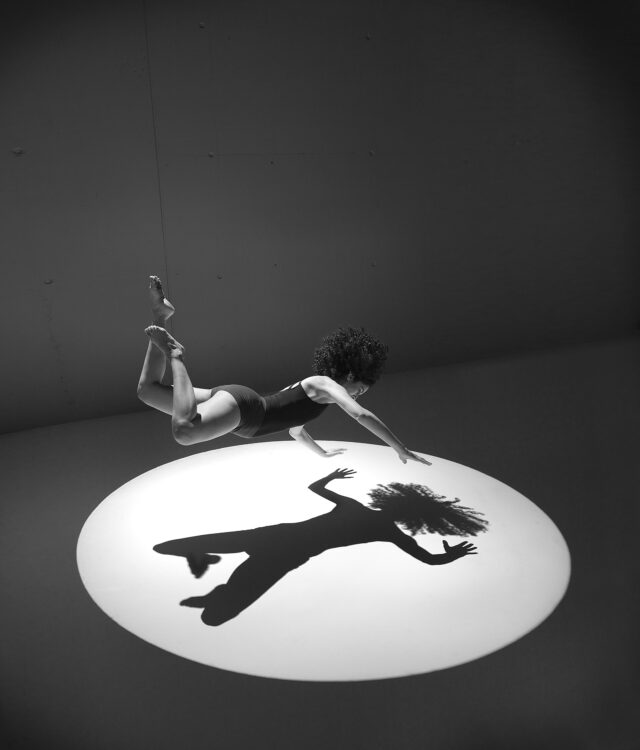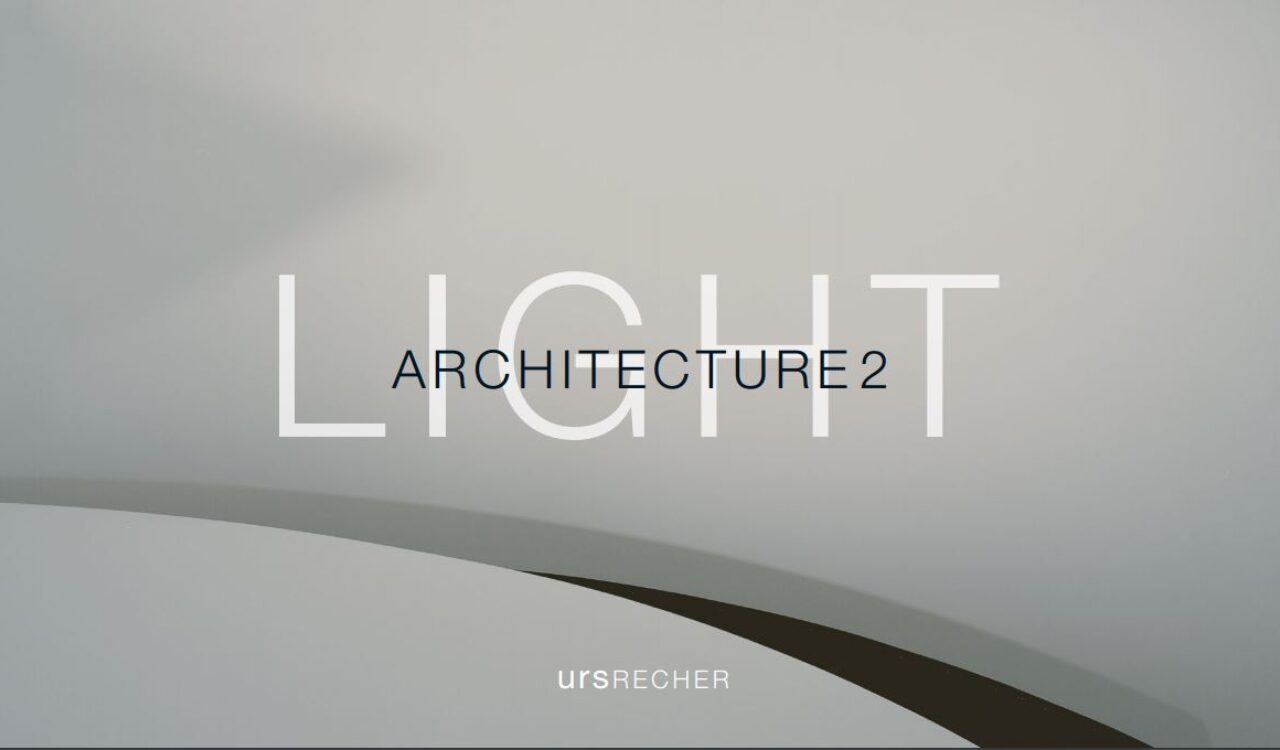What are the three basic categories of light? Looking at the hardness (or softness) of light is certainly the most simple and easy way to classify it. However, we can never call a certain light shaper hard or soft (with the exception of a point light source that is always hard). Depending on the size and the distance between the object and the light, the same light shaper can once be hard, soft or even diffused. Let’s have a closer look at these three categories:
Hard light

Looking at the light of a point light source, we will see very clearly defined shadows. On a background or underground there is either light or shadow, but nothing in between, no gradations. Even the finest details provoke a clear shadow. The structure of any object (e.g., textile, skin) is pointed out very clearly.
A very hard light source is the only one that does not change its characteristics if we vary the distance to the object (but according to the inverse square law it does change the power). The shadows remain the same: very sharp.
Hard lights may increase the contrast of the object. The areas directly lit may be burnt while the shadows remain very dark.
The hardness of the light finally has an influence on the color saturation. Small and hard lights increase the saturation of the picture while soft, and especially diffused lights reduce it.
The following broncolor light shapers can be used as hard lights:
- Any open reflector like P70, P65, P45, P50, Reflector Par if used over a certain distance; a few meters, and more.
- Fresnel spots like Pulso Flooter, Pulso Spot 4, Fresnel spot attachment for Picolite.
- Optical systems like Pulso Spot 4 with 150mm optical snoot, projection attachment for Picolite. Sunlite set, Litestick or bare bulbs (lamp head with no attachments at all).
Soft Light

Average soft light sources have about the same sizes as the objects or set-ups they illuminate: Let’s say a 50 by 50 cm softbox for a narrow-cropped portrait or an 80 by 140cm softbox for a full-body shot.
The shadows on the under- and backgrounds are still clearly visible, even when they are not sharply defined anymore. Big parts of these shadows show gradations, and a small core shadows still exist. Small and fine details, however, do not appear in the shadow. The texture of our object is now shown in lower contrast and is therefore not as clear as in hard light.
Soft light still increases the contrast of the object a little, but less than a hard one. The color saturation finally is somewhere in between the one derived from a hard light (high) and a diffused light (low). Being soft, our light source got a certain size (it is not a point anymore) and the distance from it becomes very important:
The closer we get, the bigger the light source becomes (seen from the perspective of the object or model). This means that our light becomes softer when we get closer, and harder, when we use it over larger distances.
A light of about 100 by 100cm placed at 4 meters from the model has the same hardness as a source of half the size (50 by 50 cm) at half the distance (2 meters). Due to the inverse square law, we expect other effects (higher contrast when placing the light closer to the object or model). When we bring the 100 by 100 cm softbox to half the distance (we will have to reduce the power by about 2 f-stops) the light will be a lot softer.
The following light shapers can be used as soft lights:
- Any size of Softbox or Octabox (choose the dimensions and the position carefully!)
- Acrylic lights such as Boxlite 40 (for rather small objects), Satelite Staro and Balloon.
- Softlight reflector P-soft and Beauty dish
- Para 88, 133, 177 and 222
Diffused light
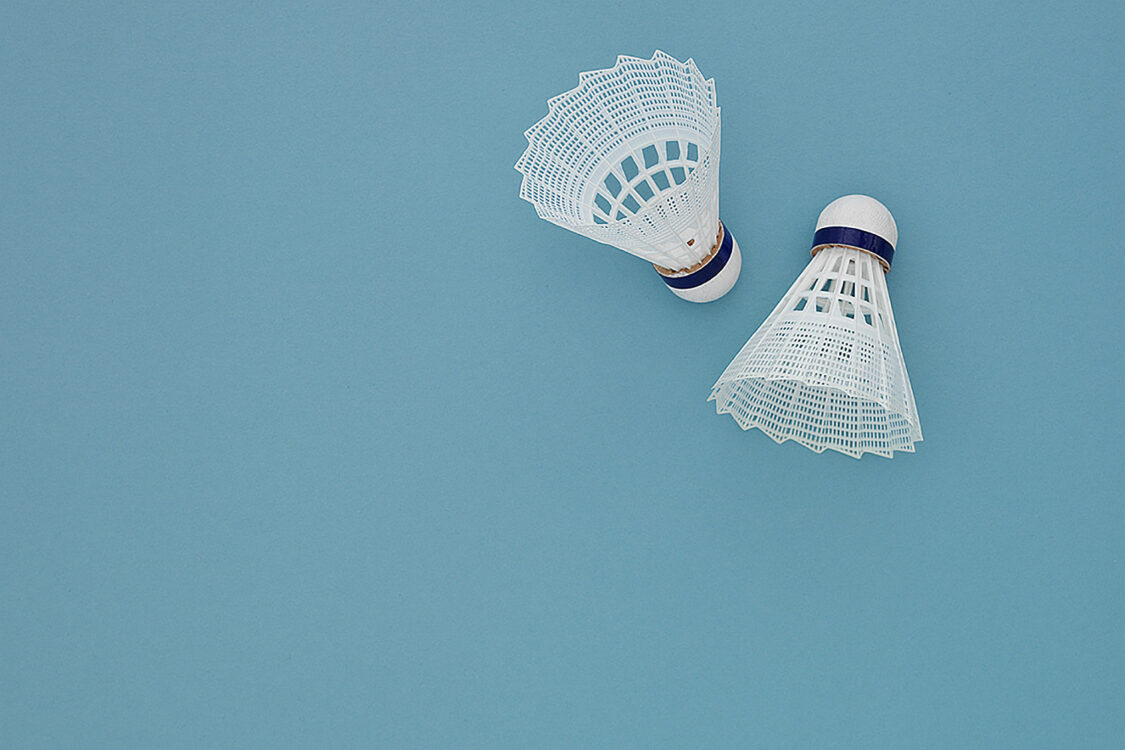
Now the light source is huge. Shadows no longer exist as the light is big enough to shine all around the object or model.
The light does not show any direction anymore and the only contrast remaining in the photograph is the contrast of the object itself.
The structure of the object’s surface is as flat as possible, almost invisible and the color saturation is heavily reduced.
The following light shapers can be used as diffused lights:
- Big Soft- and Octaboxes at short distances for rather small objects.
- Indirect lights reflected by several bright walls. (These walls must be neutral in color to avoid a color shift).
- Light-tents wrapped around the object.
A good example to illustrate the difference between hard and soft shadows:
Through a very narrow opening of curtains, daylight is falling into this hotel room. Horizontally, the opening is only a few centimeters wide – the corresponding shadows are very hard. The vertical shadows, however, are very soft because the curtains let some light in from the ceiling to the floor.
In the studio, this effect can be simulated with a Striplite 60, a litestick and with narrow softboxes like the 30x120 or the 30x180 cm softbox, especially when these are equipped with the additional strip mask.





